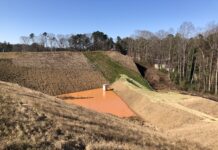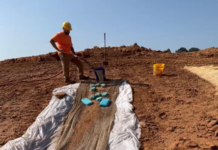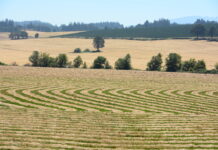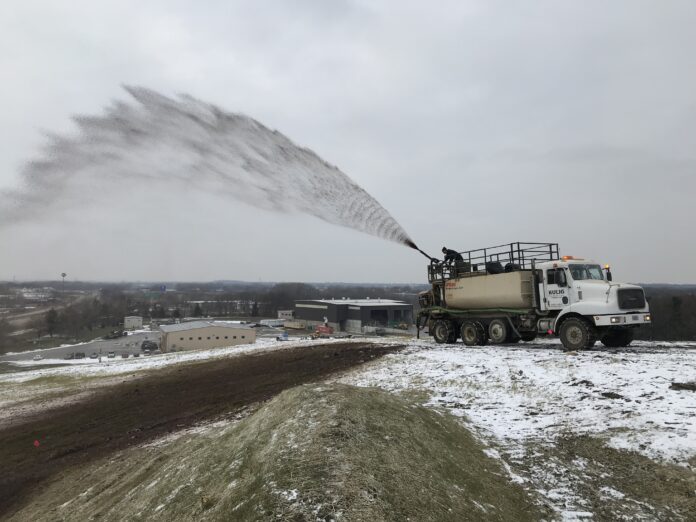
The importance of specifying and implementing erosion control and custom seed mixes for permanent stabilization on construction sites is frequently overlooked. Often, erosion control and revegetation sections in project specifications are simply copied and pasted from previous projects or are boiler-plated from state or federal agency standards. While the erosion and sediment control industry may place a strong emphasis on these aspects of design documents, the successful establishment of vegetation is often not the primary goal, resulting in limited attention.
As the focus on post-construction land use gains prominence, the incorporation of resilient, low-maintenance and ecologically-beneficial native seed mixes has become more common. Unfortunately, native seeding comes with decades of unverified requirements regarding seeding rates and application methods. One such requirement is the insistence on doubling seeding rates when hydroseeding native seed blends. While this may be a useful practice in some instances, the widespread adoption of this method can result in poor revegetation efforts, also driving up costs. It is believed that this argument to increase seeding rate is largely based on the fact that seed to soil contact is critical.
However, there have been numerous successful native seeding projects hydroseeding with biotic soil technologies and fiber reinforced matrix that rarely result in traditional seed to soil contact (Figure 1). Rather, the seed remains in suspension within the matrix of the biotic soil product. Biotic soil provides a cocoon of ideal temperature and moisture to maximize seed germination rates, which is important for native seeds. The erosion control component (Figure 2) ensures the seed and soil remain intact and on target until root development into the soil occurs.
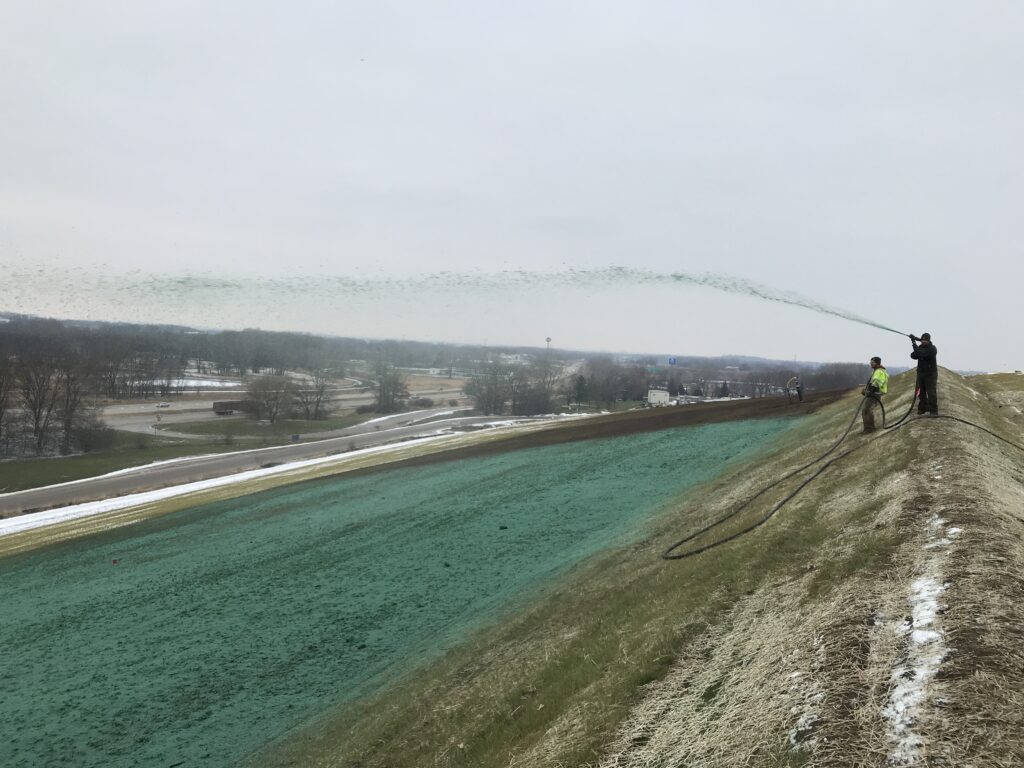
Due to these misconceptions, planners or project managers can engage professional restoration ecologists when designing custom native seed blends. Restoration ecologists will take numerous site attributes into consideration when designing seed mixes including soil structure/type, soil hydrology, slope gradient, exposure angles, budgetary constraints and overall project objectives.
Professional restoration ecologists can also provide insight into metrics like the coefficient of conservatism, which is an indicator of how difficult the species is to establish and its longevity. Another metric is intra-species interactions within a mix, which is a measure of how individual species will interplay and relate to one another and is based on monitoring data and previous observations. Additional considerations should include morphological variation (height, stature, dominance), phenological bloom periods and overall ecological impact (pollinator support and biodiversity lift).
Unfortunately, most state and federal agency specifications for native seed mixes, which are often expensive, are highly driven by available funding. For instance, most United States Department of Agriculture Farm Bill program native seed mixes are installed at a rate of roughly 5.6 Pure Live Seed (PLS) kg/ha (5 PLS lb/acre), which is a fundamentally low rate. Native grass seed is far less expensive as compared to native wildflower (forb) or native legume seed, so most agency-specified seed mixes are 80% to 90% grass by volume, which leads to reduced ecological and sustainability value and increases maintenance.
Other critical factors when selecting a native seed blend and application rates in the field include:
- Use of Pure Live Seed
Native seed mixes should always be designed and purchased with Pure Live Seed in mind. It is a function of seed viability or how much of the given seed lot is actually viable seed and seed purity or how much weight by total volume of the seed lot is inert material such as stem, chaff, beard, appendage or debris.
- Timing of Establishment and Nurse Crops
Spring native hydroseeding in the upper Midwest will have the highest success. The primary nurse crop in this particular region is annual Esker oats, which does not release allelopathic compounds like Annual Ryegrass, and should be tank-mixed and applied with the native seed.
- Expectations
The phrase regarding native vegetation establishment is as follows: Year one it sleeps, year two it creeps, year three it leaps. While some natives may germinate early, it often takes years to establish (Figure 3).
- Species-specific Requirements
Some native wildflower species require cold-moist stratification to germinate while many native legumes require bacterium inoculant to germinate.
- Size of Seeds
Native seed mixes should be designed to consider seeds per square foot rather than just Pure Live Seed mass per area. Seeds per square meter or seeds per square foot, takes into account the size of the individual species’ seed and the proposed application rate. Native wildflower seed can range from 11,000 to 1,100,000 seeds per kg (5,000 to 500,000 seeds per pound). Incorporating seed mixes and application rates that account for these considerations will allow vegetation to establish in an ideal environment that minimizes overcrowding.
Dane County Case Study
Poor soil installed on 3H:1V slopes at the Dane County Landfill project near Madison, Wisconsin yielded mixed vegetative results, to the point that the county wanted to reevaluate the soil conditions, vegetation and installed erosion control. Soil conditions included nutrient-depleted and microbially/biologically marginalized and stockpiled soil. The vegetation goal on the site was to establish a pollinator-friendly native seed blend that would reduce long-term maintenance costs, improve the resiliency and aesthetics, and provide ecological benefits. The material selected by a restoration ecologist to improve soil health was biotic soil with a flexible growth medium was applied over it to protect the seed and soil until vegetation was permanently established. The designed and installed native seed mix was specified at rates comparable to conventionally broadcasted or drilled seed (approximately 10 PLS pounds per acre). The vegetation performance standards for the site were attained on time and on budget (Figure 4).
Ongoing Study
While there are countless examples of successful native hydroseeding applications using drill seeding rates, a three-year study is currently underway at Stantec Native Plant Nursery in Walkerton, Indiana, to study this more closely. Early results show that establishment has been improved when applying native seed blends at drill seeding rates when compared to doubled seeding rates. Once this study has concluded, a white paper, presentation and any conclusions will be made available.
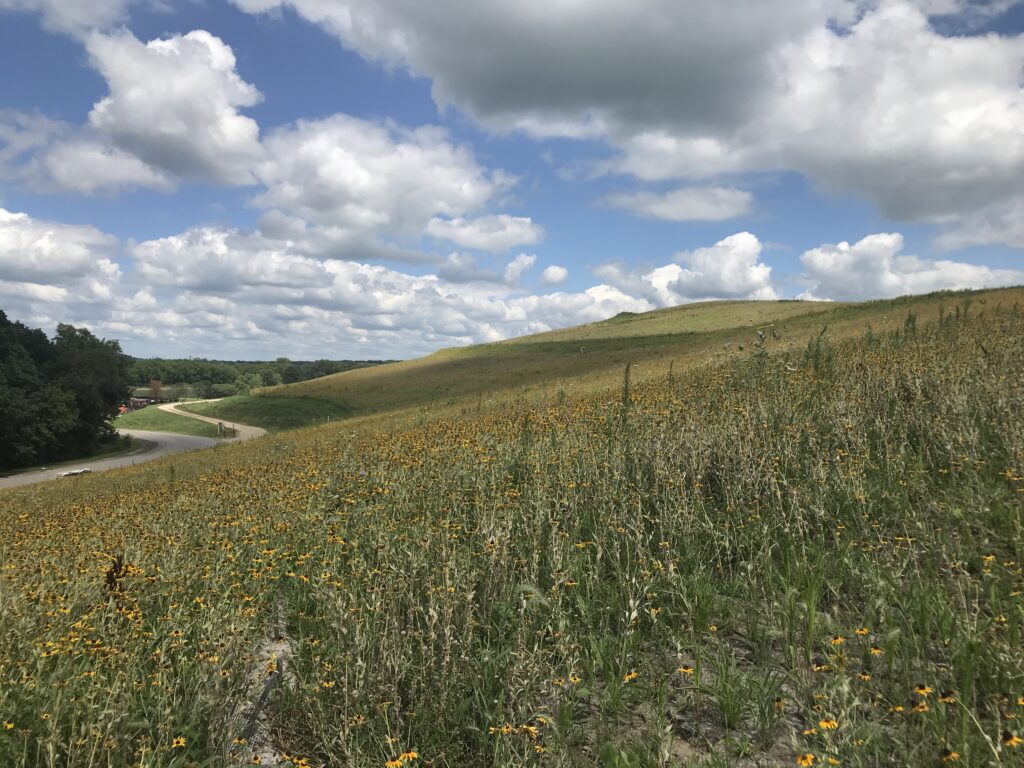
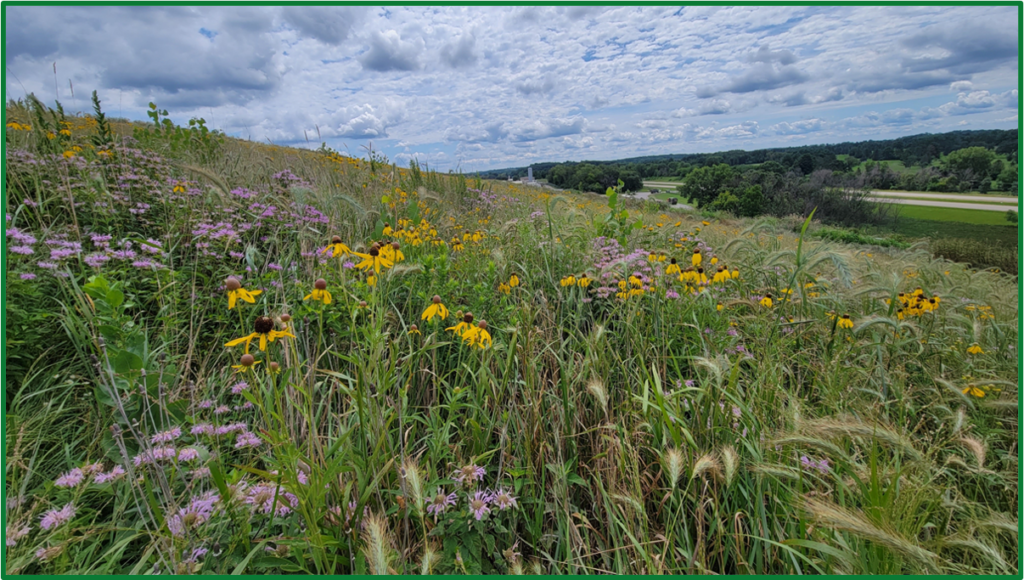
As the construction industry has seen a growing emphasis on post-construction land use, the countless benefits of native vegetation are being considered more and more. While this land use, when successfully implemented, is undoubtedly beneficial, the many intricacies surrounding native prairie establishment must be reviewed. Incorporating outdated assumptions like “double seed rate when hydroseeding native seed blends,” can result in damaging consequences that add cost, require more resources and produce disappointing results.
More Information
Learn more about the Dane County Landfill project in this video recap: https://www.youtube.com/watch?v=uO8vvdjGMc8&t=66s.
About the Experts
- Matthew M. Welch, CPESC, CESSWI, is director of technical development at Profile Products LLC.
- Clayton Frazer, principal ecologist and co-founder, Native Range Ecological. Frazer, previously with Eco-Resource Consulting, specializes in vegetating challenging site conditions with native vegetation.



